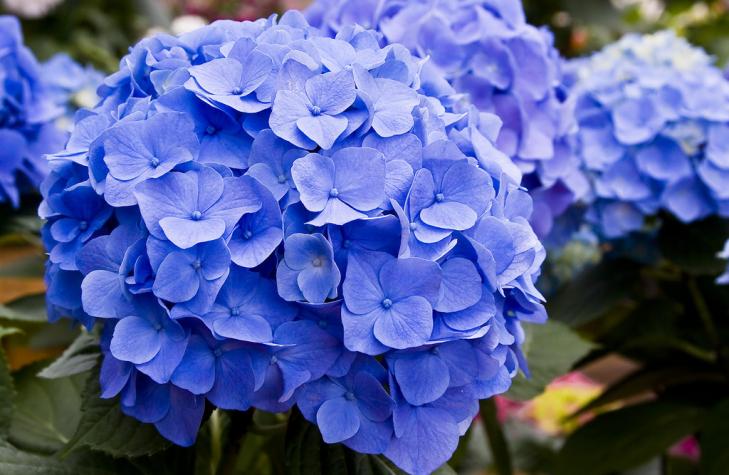Writer
Linda GeistCOLUMBIA, Mo. – Bold, eye-catching hydrangeas appear at floral shops and garden centers now through Mother’s Day.
“Hydrangea’s regal elegance is uncommon among potted plants,” said David Trinklein, University of Missouri Extension horticulturist.
Unlike other flowers, flowers of hydrangeas can change color from year to year with a little help. Flowers bloom pink if the soil pH is nearly neutral. Gardeners will get blue flowers by acidifying the soil with aluminum sulfate. Aluminum causes flowers to turn blue; applying it in sulfate form lowers the pH to allow plants to absorb it. White flowers do not change.
If kept moist, potted hydrangeas remain attractive indoors for several weeks. If they dry out, flowers collapse even before leaves show signs of wilting. Once flowers wilt, they do not recover.
After potted hydrangeas finish flowering, discard the plant or keep it for planting outdoors. “Your choice might depend upon your geographical location as well as your interest in gardening,” Trinklein said.
You can also bloom it again indoors, although it is challenging, he said. Cut shoots back after it has finished flowering so that two pairs of leaves remain on each shoot. Repot using a soilless growing medium with a high percentage of peat moss.
After the danger of frost has passed, move the plant outside. Sink the pot into the soil in a place that gets morning sun and light afternoon shade. Water regularly and fertilize with a complete fertilizer every two weeks. For extra-large flower heads, allow only three stems to develop. Take out shoots that grow toward the center of the plant. Lift the pot occasionally during the summer to keep root growth from moving outside the pot. Pinch back shoots during the summer. Make the last pinch no later than July.
Keep the plant outside as long as possible in the fall. Bring indoors before a hard freeze. Let the plant keep its leaves until about Nov. 1. Then pick off all of the leaves by hand or put the plant in total darkness until all leaves drop. Induce flowering by keeping the plant at 35 to 40 degrees Fahrenheit for about six weeks. There is no need to water during this time.
After the cooling period, move the plant to a cool, sunny room with night temperatures of 55-60 F. Water well and fertilize about every two weeks. It should flower in about four months.
If you live in the southern third of Missouri, you can plant florist hydrangeas in the garden, Trinklein said. Wait until the danger of frost passes to plant and water regularly until the hydrangea establishes. If the winter is severe, protect plants by covering with inverted boxes or baskets. You also may put wire cylinders filled with mulch over the plants. Mulch should be loose; dense mulch retains moisture, which can lead to disease getting into the flower buds. Evergreen boughs also work well. In milder winters in southern Missouri, protection is not necessary.
Some types of hydrangeas are more suitable for outdoor gardens, said Trinklein. One is Hills-of-snow hydrangea. Unlike florist hydrangea, this plant flowers on new growth. It can be pruned more severely and still flower well. It is available only in white, but it bears large, attractive flowers.
Peegee hydrangea produces large, white flowers in a pyramid shape. In mild climates, it grows to 15 feet. It tends to be smaller in Missouri.
Oakleaf hydrangea adapts well to Missouri’s climate. It has large, showy leaves that turn red in fall. It is a good choice for low-light areas. It produces white flowers in early summer. Flowers gradually change to pinkish-purple and stay that way until flowers turn brown in fall.
Hydrangeas contain a mildly toxic chemical, so keep them away from children and pets.
Photo: https://extension.missouri.edu/media/wysiwyg/Extensiondata/NewsAdmin/Photos/stock/plants/hydrangea.jpg
Caption: Blue hydrangea.
Credit: Shared under a Creative Commons license (CC BY 2.0) by Flickr user Liz West.
